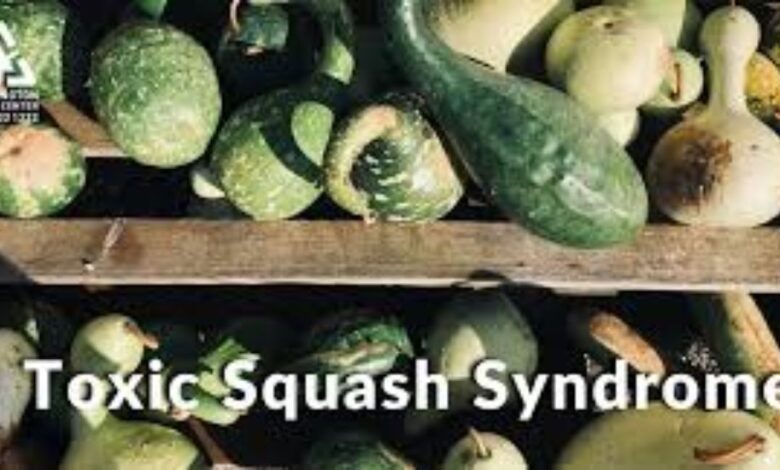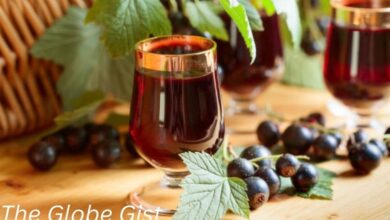Are There Any Toxic Squash? Know the Risks

Squash, with its wide variety of types, shapes, and flavors, has long been a staple in home gardens and dinner tables around the world. From the sweet, tender flesh of butternut squash to the versatile zucchini, it seems harmless and even beneficial to our health. But not all squash are as safe as they appear. Recently, questions have arisen such as, “Are there any toxic squash?” Surprisingly, the answer is yes—certain squash varieties and hybrids can be toxic under specific conditions.
This article delves deep into how squash toxicity occurs, the chemical culprit behind it, real-world examples of poisoning, and how you can protect yourself and your family. Whether you’re a home gardener, health-conscious eater, or curious cook, this guide provides essential knowledge to stay safe while enjoying this popular vegetable.
What Makes a Squash Toxic?
Understanding Cucurbitacins
The main toxins in certain squash are bitter-tasting compounds called cucurbitacins. These naturally occurring chemicals are part of a plant’s defense mechanism against insects and pests. While wild squash (and some decorative varieties) often contain high levels of cucurbitacins, commercial squash is usually bred to minimize or eliminate them.
However, under certain conditions, these toxins can reappear in garden squash and even in produce bought from local sources.
How Toxic Squash Develops
1. Cross-Pollination with Wild or Ornamental Squash
One of the most common causes of toxic squash is cross-pollination between edible squash (like zucchini or pumpkins) and wild or ornamental varieties (like decorative gourds). These wild relatives often retain their bitter, toxic traits.
When a seed from such a cross-pollination event grows into a fruit-bearing plant, the result may look normal but contain dangerously high levels of cucurbitacins. These squash are often referred to as “volunteer squash” or rogue squash, and they carry unpredictable genetic traits.
2. Environmental Stress
Even commercial varieties bred for low bitterness can produce cucurbitacins when exposed to stress, such as:
-
Drought or inconsistent watering
-
Extreme temperatures
-
Poor soil nutrition
-
High levels of nitrogen fertilizer
Such stress responses may trigger the plant to produce defensive compounds as a survival mechanism, increasing the level of toxicity in the fruit.
3. Improper Seed Saving
Saving seeds from squash that grew in your garden—especially if you grow multiple types—can also be risky. Squash plants of the same species (Cucurbita pepo, C. maxima, C. moschata, etc.) can easily cross-pollinate, even if they are different varieties. This means your next crop could carry the bitterness gene even if the parent plants seemed safe.
Recognizing Toxic Squash
The Bitter Warning Sign
The clearest and most crucial sign of a toxic squash is its extremely bitter taste. While it might be tempting to ignore this bitterness or assume it’s a minor defect, bitterness is your body’s natural warning system.
-
Never attempt to “cook out” bitterness.
-
Do not add sugar or seasoning to mask it.
-
Bitter flavor in squash is not normal—discard immediately.
Eating bitter squash can result in serious gastrointestinal symptoms and, in rare cases, more severe health problems.
Real Cases of Squash Poisoning
France (2018 Study)
A clinical toxicology study published in 2018 analyzed 353 cases of squash-related poisoning in France. Symptoms included:
-
Severe abdominal pain
-
Vomiting
-
Diarrhea
-
Dizziness
All cases were traced back to bitter-tasting squash or zucchini. While most recovered quickly, the study emphasized how common this issue has become in home gardens and local markets.
Czech Republic (2024 Incident)
In 2024, a man in the Czech Republic died after consuming toxic zucchini from a local source. His wife, who ate a smaller amount, survived but was hospitalized for several days. The zucchini had been homegrown, and the toxic effects were traced back to high cucurbitacin content due to drought stress.
Hair Loss Case
In an earlier case, a woman in France suffered sudden hair loss (toxic alopecia) after consuming bitter squash. Although hair loss is a rare symptom, it signals how potent cucurbitacins can be on the human body.
Symptoms of Squash Toxicity
If you’ve consumed bitter squash, watch out for the following symptoms within 1–2 hours:
-
Nausea and vomiting
-
Severe abdominal cramps
-
Watery or bloody diarrhea
-
Dizziness or weakness
-
Headache or fever in rare cases
In severe cases, toxicity can lead to dehydration, low blood pressure, and hospitalization.
How to Stay Safe
1. Taste Test Before Cooking
Always taste a small raw piece of the squash before preparing it, especially if it’s:
-
Homegrown
-
Purchased from a roadside stand
-
Grown from saved or unknown seeds
If it tastes bitter, spit it out and do not consume the rest.
2. Buy From Trusted Sources
Buy seeds and squash from certified, reputable seed companies or grocery stores. Avoid consuming produce from plants grown from unknown or volunteer squash seeds.
3. Avoid Seed Saving (Unless You’re an Expert)
Unless you’re experienced in plant genetics and squash taxonomy, don’t save squash seeds from your garden. The risk of cross-pollination is too high.
4. Control Pollination
If you’re a home gardener growing multiple squash types, isolate plants or use hand-pollination techniques to avoid unintended cross-breeding.
Myths and Misconceptions
“I can just boil the bitterness away.”
False. Cucurbitacins are heat-stable. Cooking does not reduce or eliminate their toxicity.
“Adding salt or sugar will mask it.”
False. Even if bitterness seems reduced, the toxic compound remains potent.
“If it looks like zucchini, it’s safe.”
False. The appearance of squash doesn’t indicate safety. Toxic squash can look exactly like edible ones.
Cucurbitacins in Other Vegetables
Though squash is the main concern, cucurbitacins can also be found in:
-
Gourds
-
Pumpkins
-
Melons (rarely)
However, the levels are typically lower in store-bought produce. Wild gourds and some decorative varieties should never be eaten.
Conclusion
So, are there any toxic squash? Yes—absolutely. Though commercial squash varieties are bred for safety, under certain conditions, they can produce cucurbitacins, a natural but potent toxin. Cross-pollination, environmental stress, and improper seed saving are the main causes.
By remaining vigilant, performing taste tests, and avoiding home seed reuse, you can safely enjoy the delicious and nutritious benefits of squash without worry. Squash toxicity may be rare, but when it strikes, it can cause serious health issues—some even life-threatening.
Stay informed, stay safe, and when in doubt—throw it out.
This article is brought to you by The Globe Gist, your trusted source for insightful news and deep-dive articles on health, environment, and consumer safety.



